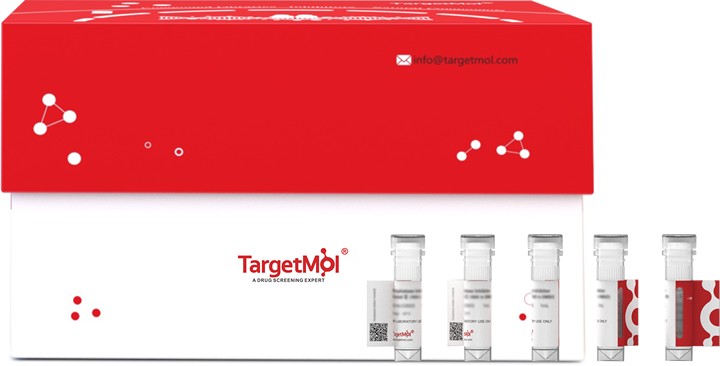 您的购物车当前为空
您的购物车当前为空
BPI Protein, Human, Recombinant (His)
一键复制产品信息Bactericidal/permeability-increasing protein is a member of the BPI/LBP/Plunc superfamily and BPI/LBP family. It is a cationic protein which can be detected in the azurophilic granule and on the surface of polymorphonuclear leukocytes. Bactericidal/permeability-increasing protein also is a lipopolysaccharide binding protein. It is associated with human neutrophil granules and has bactericidal activity on gram-negative organisms. Bactericidal/permeability-increasing protein contains two domains that adopt the same structural fold, even though they have little sequence similarity. It binds to and neutralises lipopolysaccharides from the outer membrane of Gram-negative bacteria. The cytotoxic action of bactericidal/permeability-increasing protein is limited to many species of Gram-negative bacteria; this specificity may be explained by a strong affinity of the very basic N-terminal half for the negatively charged lipopolysaccharides that are unique to the Gram-negative bacterial outer envelope.

BPI Protein, Human, Recombinant (His)
一键复制产品信息| 规格 | 价格 | 库存 | 数量 |
|---|---|---|---|
| 5 μg | ¥ 428 | 6-8日内发货 | |
| 10 μg | ¥ 683 | 6-8日内发货 | |
| 20 μg | ¥ 1,130 | 5日内发货 | |
| 50 μg | ¥ 2,270 | 5日内发货 | |
| 100 μg | ¥ 4,430 | 5日内发货 |
产品信息
| 生物活性 | Activity is not tested. It is theoretically active, but we cannot guarantee it. |
| 产品描述 | Bactericidal/permeability-increasing protein is a member of the BPI/LBP/Plunc superfamily and BPI/LBP family. It is a cationic protein which can be detected in the azurophilic granule and on the surface of polymorphonuclear leukocytes. Bactericidal/permeability-increasing protein also is a lipopolysaccharide binding protein. It is associated with human neutrophil granules and has bactericidal activity on gram-negative organisms. Bactericidal/permeability-increasing protein contains two domains that adopt the same structural fold, even though they have little sequence similarity. It binds to and neutralises lipopolysaccharides from the outer membrane of Gram-negative bacteria. The cytotoxic action of bactericidal/permeability-increasing protein is limited to many species of Gram-negative bacteria; this specificity may be explained by a strong affinity of the very basic N-terminal half for the negatively charged lipopolysaccharides that are unique to the Gram-negative bacterial outer envelope. |
| 种属 | Human |
| 表达系统 | HEK293 Cells |
| 标签 | C-His |
| 蛋白编号 | P17213 |
| 别名 | rBPI,BPIFD1,bactericidal/permeability-increasing protein |
| 蛋白构建 | Val32-Lys487 |
| 蛋白纯度 | > 95% as determined by SDS-PAGE |
| 分子量 | 51.6 kDa (predicted); 50-60 kDa (reducing conditions) |
| 内毒素 | < 1.0 EU/μg of the protein as determined by the LAL method. |
| 蛋白性状 | Lyophilized powder |
| 缓冲液 | Lyophilized from a 0.2 μm filtered solution of 4mM HCl. |
| 复溶方法 | Reconstitute the lyophilized protein in 4mM HCl. The product concentration should not be less than 100 μg/ml. Before opening, centrifuge the tube to collect powder at the bottom. After adding the reconstitution buffer, avoid vortexing or pipetting for mixing. |
| 存储 | It is recommended to store recombinant proteins at -20°C to -80°C for future use. Lyophilized powders can be stably stored for over 12 months, while liquid products can be stored for 6-12 months at -80°C. For reconstituted protein solutions, the solution can be stored at -20°C to -80°C for at least 3 months. Please avoid multiple freeze-thaw cycles and store products in aliquots. |
| 运输方式 | In general, Lyophilized powders are shipping with blue ice. |
| 研究背景 | Bactericidal/permeability-increasing protein is a member of the BPI/LBP/Plunc superfamily and BPI/LBP family. It is a cationic protein which can be detected in the azurophilic granule and on the surface of polymorphonuclear leukocytes. Bactericidal/permeability-increasing protein also is a lipopolysaccharide binding protein. It is associated with human neutrophil granules and has bactericidal activity on gram-negative organisms. Bactericidal/permeability-increasing protein contains two domains that adopt the same structural fold, even though they have little sequence similarity. It binds to and neutralises lipopolysaccharides from the outer membrane of Gram-negative bacteria. The cytotoxic action of bactericidal/permeability-increasing protein is limited to many species of Gram-negative bacteria; this specificity may be explained by a strong affinity of the very basic N-terminal half for the negatively charged lipopolysaccharides that are unique to the Gram-negative bacterial outer envelope. |





 |
|